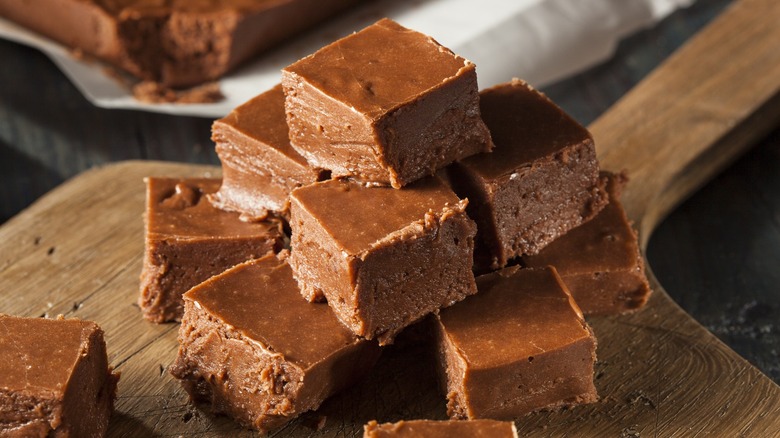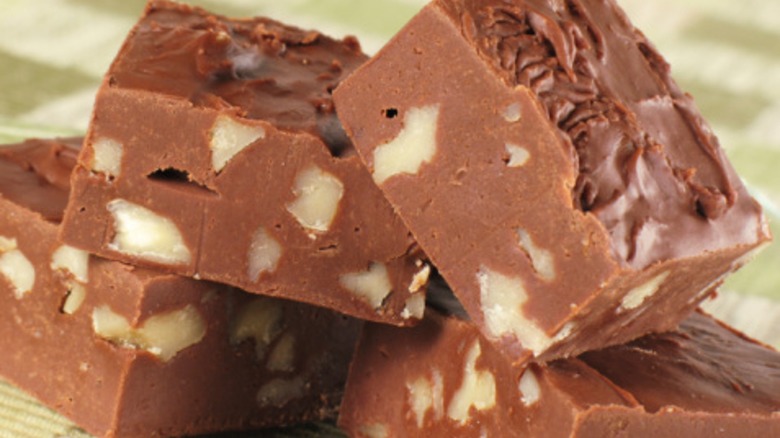How, Exactly, Do You Fix Grainy Fudge?
Homemade fudge is a favorite food to gift for the holidays, as it's something that most people recognize as a labor of love. It takes time and patience, and one small error can ruin the whole effort. Anyone can make mistakes making homemade fudge, but luckily there's usually a fix that will get it back on the track towards perfection. If you discover that your mixture is grainy, some quick thinking will save the entire batch.
Pour the fudge back into your pan, and add about a cup of water to it, along with a tablespoon or two of evaporated milk, whipping cream, or whatever cream you're using. Some people skip the water and just add cream to the mixture to reheat. Start cooking it at a lower temperature, and make sure it is smooth before bringing it back up to the required 234 to 240 degrees.
While the solution to fix grainy fudge is simple, there are steps you can take — and even ingredients you can add — that will help ensure your fudge stays smooth during the whole fudge-making process.
Prevent graininess before it starts
When making fudge, our goal is to change the sugar into a smoother, softer, and more even texture. The most common reason for graininess is because you began beating or stirring it while the fudge was still cooling. It's best to wait until it's cooled to somewhere around 110 to 113 degrees to begin stirring.
When you finally begin mixing the fudge, be careful not to splash it on the sides of the saucepan, which can cause the sugar to recrystallize. To counteract this, cover the pan for a couple of minutes after the fudge begins to boil, causing steam to form to help rinse the chocolate from the sides. Or, you can swirl instead of stir, and use something like a wet brush or paper towel to push the sugar along the inside of the pan back down into the mixture. When your fudge is ready to pour, don't scrape the pan too thoroughly, or you'll add any grain bits from the pan sides to your fudge.
Lastly, you could always add a tiny amount of an additional ingredient that will help prevent crystals from forming. This could be a teaspoon of cream of tartar, which helps break up the sucrose, or more commonly, adding corn syrup, which uses glucose to stop the sucrose in the fudge from crystallizing. Or, avoid dealing with grainy fudge at all. By simply using condensed milk, you cut out all the stirring and waiting, and you still have a delicious fudge recipe.

